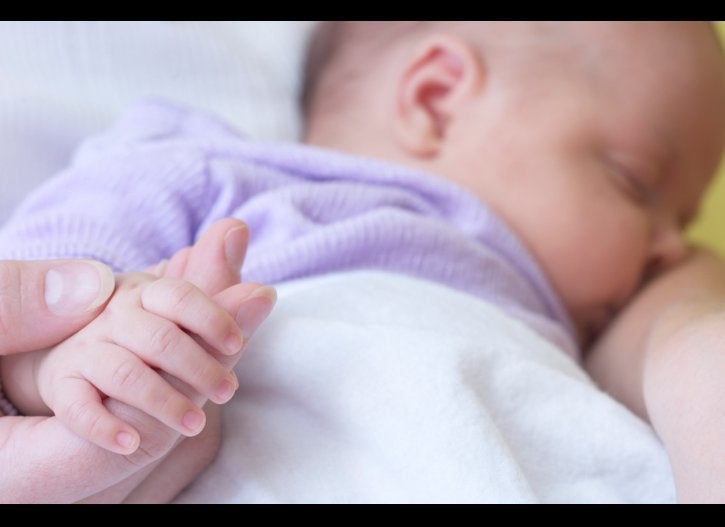When adults choose not to vaccinate themselves or their children against measles, it’s babies and toddlers who suffer most.
In a new analysis of all measles cases from 2001 to 2015, researchers from the U.S. Centers for Disease Control and Prevention found that while the disease is rare in the U.S., measles is most common among babies and toddlers. There were more than five cases per million people among children under 15 months, compared to less than one case per million people in the general population.
Specifically, beginning at 16 months, measles rates began declining as people got older. In total, there were 1,789 recorded measles cases in the U.S. from 2001 to 2015.
“Even if [a measles outbreak] starts among school-aged kids or another population, ultimately babies get hit the hardest,” said Dr. Peter Hotez, a pediatric vaccine expert and dean of the National School of Tropical Medicine at Baylor College of Medicine, who was not involved in the research. “You worry about measles because it’s lethal and because it can cause permanent neurological impairment.”
There’s a clear explanation for why those under 15 months are most affected: The typical age for a first MMR vaccine is between 12 and 15 months old, as babies are too young and weak to get inoculated. In addition to being more at risk of measles for lack of a vaccine, babies are also more vulnerable to the disease because it affects children more severely. When young children get the measles, they’re more likely to be hospitalized, die, or end up with pneumonia, hearing loss or lifelong brain damage.
Measles is one of the most infectious viruses we know of because it can spread in the air, through a person’s coughs or sneezes. If one person gets the illness, 90 percent of unvaccinated people around him or her will also get the disease, which can result in rash, fever, sore throat and a runny nose. Two doses of the measles vaccine (in the bundled measles, mumps and rubella shot) protect a person from measles with an effectiveness rate of 97 percent.
Endemic measles was eliminated in the U.S. in 2000, but the highly contagious virus continues to bloom sporadically in the U.S., breaking out in communities with low vaccination rates. Typically, what will happen is that a person from another country brings measles to the U.S., Hotez explained. If they happen to land in an area with strong vaccination rates, the virus stops with that traveler. But if they stay in a community with low vaccination rates, the virus gets the chance to spread beyond the initial person.
This appears to be what happened during the 2017 measles outbreak in Minneapolis. While rates of vaccination are generally high there, a pocket of low vaccination rates among the Somali immigrant community allowed the virus to flourish, resulting in the infection of 79 people, 22 of whom were hospitalized. Almost all of the cases were in children under 10 years old, and 71 of the measles patients had not been vaccinated.
In 2015, the measles virus spread through Disneyland in Anaheim, California, infecting 111 people. Wealthy communities in Southern California had seen declining vaccination rates before then, which may have allowed the virus to spread more easily through the park. In response to the outbreak, state officials removed the state’s personal belief exemption for vaccines in children.
These “hot spots” of low vaccination rates are where we can expect to see more measles outbreaks in the future, Hotez said. Washington state, Oregon, Texas and Idaho are at particularly acute risk of a measles outbreak, he said, in part because they are among the 18 states that allow parents to opt out of vaccines for their children for non-medical reasons.
“My concern is that the frequency and magnitude of these outbreaks will continue to increase to the point where maybe one day we’ll no longer be able to say measles has been eliminated in the U.S.,” Hotez said. “It would be a tragic reversible of global goals for sustainable development.”
Before the measles vaccine arrived in the U.S. in 1963, about 3 to 4 million Americans got the virus every year. An estimated 400 to 500 people ― mostly children ― died of the disease each year, 48,000 were hospitalized for it and 4,000 suffered swelling of the brain as a result of measles.
Before GAVI, a global vaccine alliance, was formed in 2000, more than 750,000 children died every year from the disease. That number has fallen by 79 percent, but poor countries still struggle to get universal vaccine coverage. And in rich countries like the U.S., cases have begun to tick up because of the backsliding on vaccination rates.
Measles also appears to be surging again in Europe thanks to poor vaccination rates. Since June 2016, Italian officials have recorded more than 3,300 cases of the virus, while Romania had almost 4,000 cases.
“When measles outbreaks occur, being unvaccinated ― rather than failure of vaccine performance ― is the main driver of measles spread,” CDC researcher Nakia Clemmons said. “The best protection against measles is MMR vaccine.”
